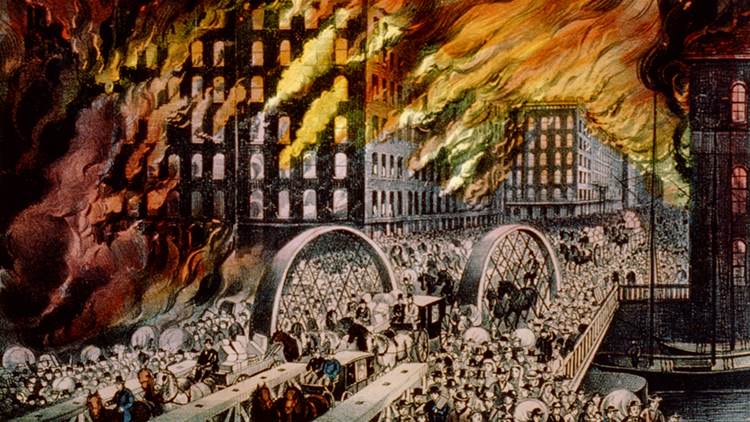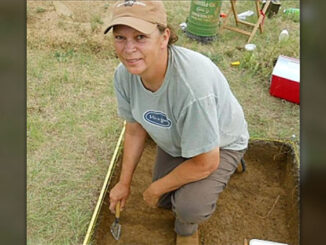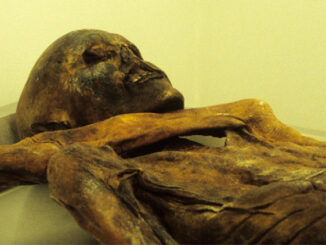
Take a look at the picture. Can you imagine seeing a fire that large in your community? That’s what happened in Chicago in October of 1871.
Chicago was growing fast. Many people lived downtown, and most structures there were built of wood. Little rain had fallen for months before the fire. And a fire the night before had damaged fire-fighting equipment. It was a recipe for disaster.
No one is exactly sure how the fire started. A legend blames a cow belonging to Mrs. Catherine O’Leary. In this story, the cow kicked over a lantern, setting a barn on fire. The fire spread rapidly, eventually burning down over 17,000 structures and leaving 100,000 homeless.
Mrs. O’Leary denied the story. Historians doubt the story, too. Some blame the fire on neighborhood boys who were smoking near Mrs. O’Leary’s barn. Other historians believe a fiery meteorite fell to earth and started the fires. This theory is supported by the fact that there were fires in Michigan and Wisconsin on the same day as the Chicago fire. The fire in Wisconsin, the Peshtigo fire, actually burned down 16 towns before it ended!
The true cause of the fire is still unknown. But we do know that the fire burned out of control for nearly two days before falling rains helped firefighters bring the fire under control.
These fires were devastating, but the fires had some positive effects. New residents flocked to Chicago as the city was rebuilt. The fire changed the way public officials and firefighters tackled fire safety issues. People paid more attention to how structures were built, thinking about how buildings could withstand fires. National Fire Prevention Month began as a way for us to think every year—What can we do to prevent fires? If a fire happens, how can we keep ourselves safe?
What Do You Think? Do you think the cow kicked over the lantern? What theory makes the most sense to you?
Photo Credit: Library of Congress Prints & Photographs Division [LC-USZC2-2093]



